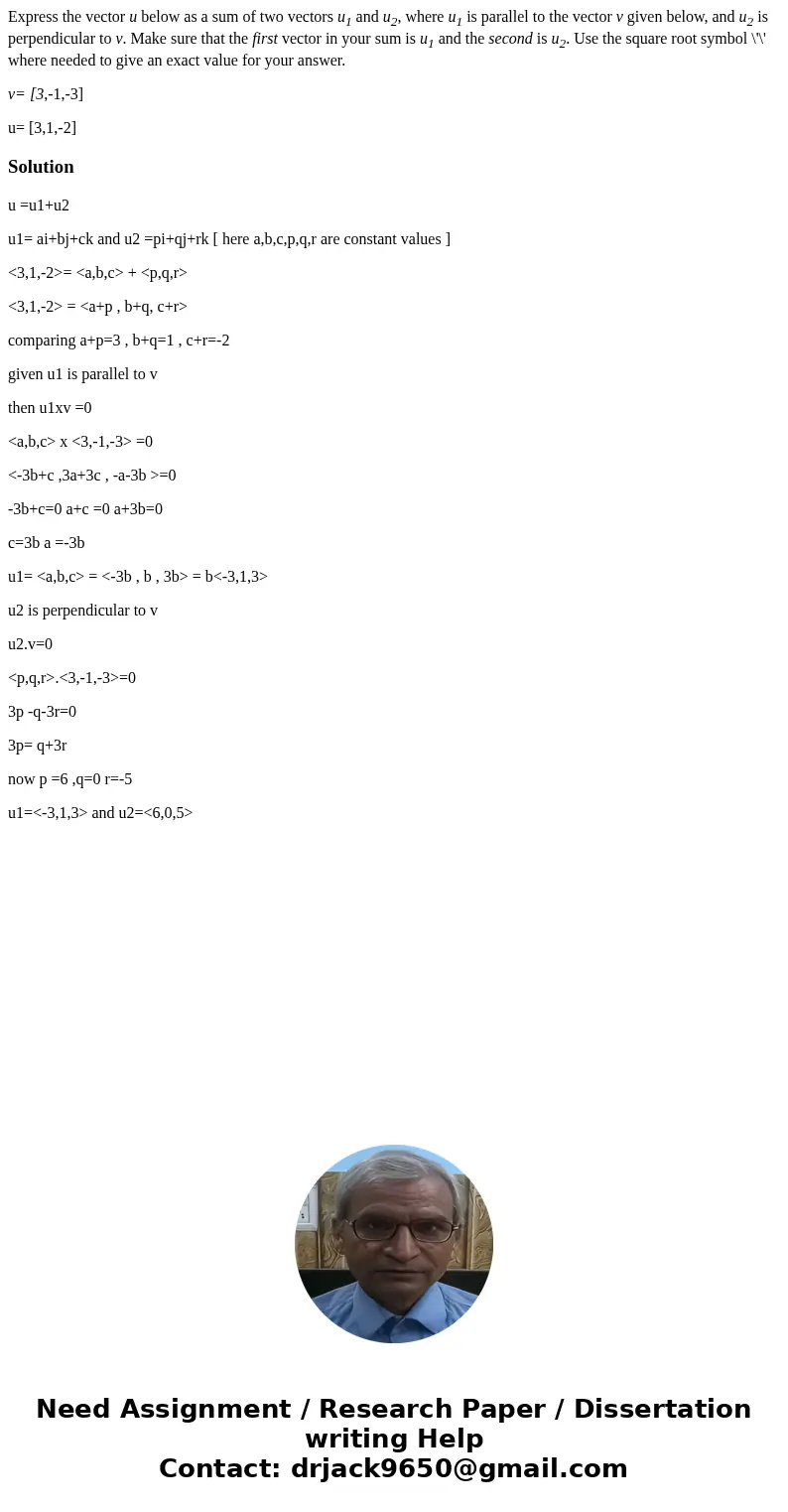Express the vector u below as a sum of two vectors u1 and u2
Express the vector u below as a sum of two vectors u1 and u2, where u1 is parallel to the vector v given below, and u2 is perpendicular to v. Make sure that the first vector in your sum is u1 and the second is u2. Use the square root symbol \'\' where needed to give an exact value for your answer.
v= [3,-1,-3]
u= [3,1,-2]
Solution
u =u1+u2
u1= ai+bj+ck and u2 =pi+qj+rk [ here a,b,c,p,q,r are constant values ]
<3,1,-2>= <a,b,c> + <p,q,r>
<3,1,-2> = <a+p , b+q, c+r>
comparing a+p=3 , b+q=1 , c+r=-2
given u1 is parallel to v
then u1xv =0
<a,b,c> x <3,-1,-3> =0
<-3b+c ,3a+3c , -a-3b >=0
-3b+c=0 a+c =0 a+3b=0
c=3b a =-3b
u1= <a,b,c> = <-3b , b , 3b> = b<-3,1,3>
u2 is perpendicular to v
u2.v=0
<p,q,r>.<3,-1,-3>=0
3p -q-3r=0
3p= q+3r
now p =6 ,q=0 r=-5
u1=<-3,1,3> and u2=<6,0,5>

 Homework Sourse
Homework Sourse